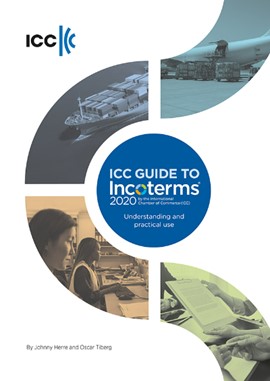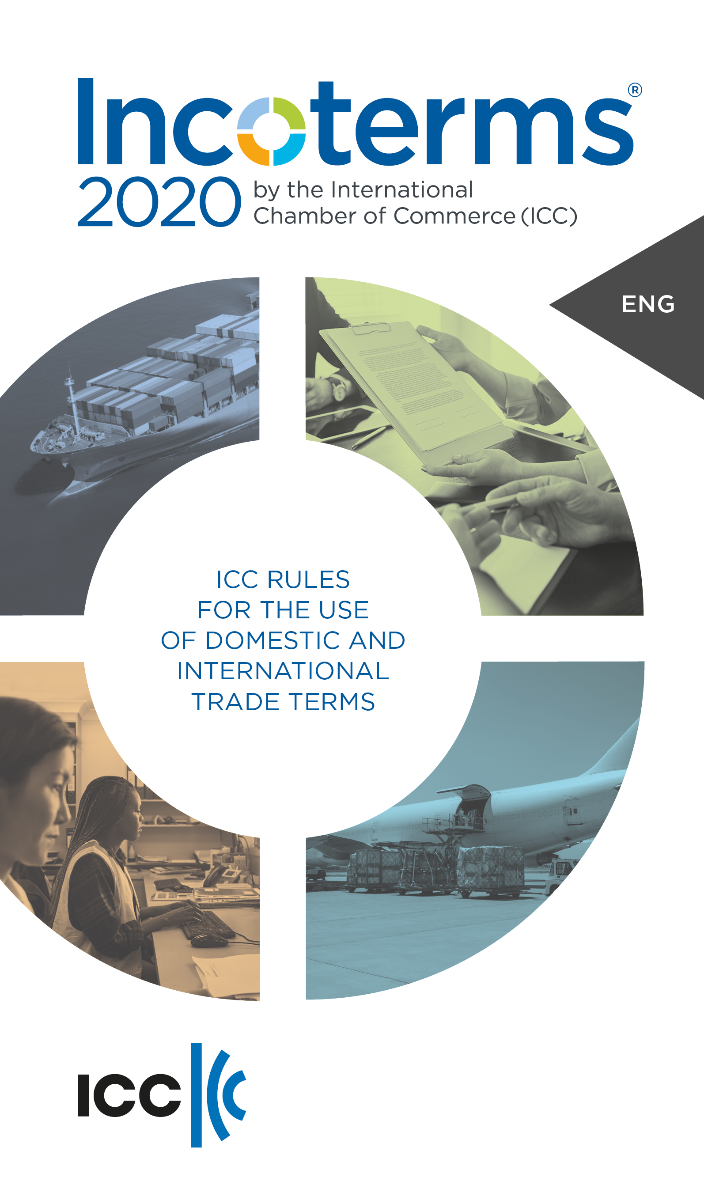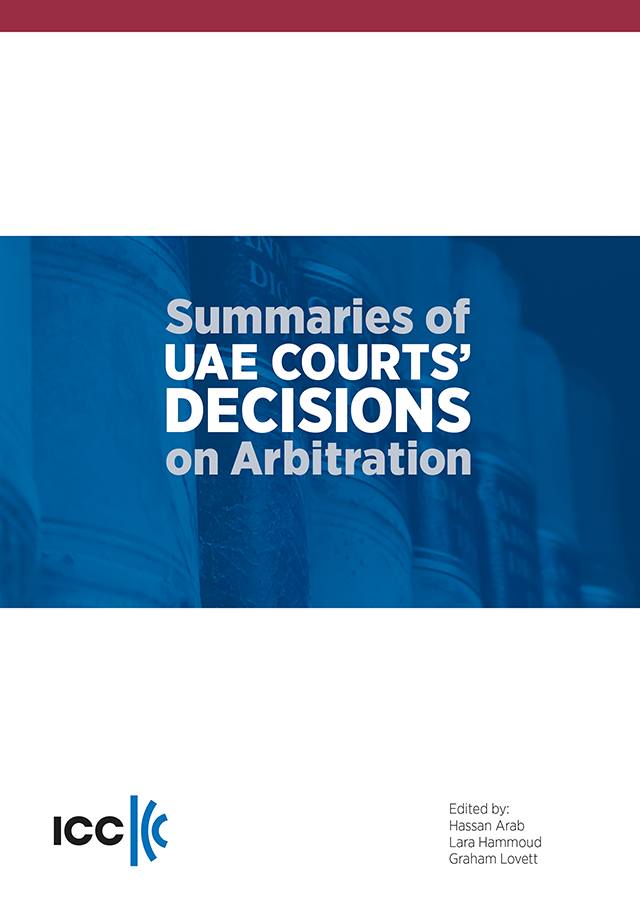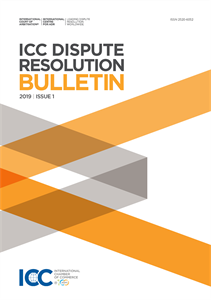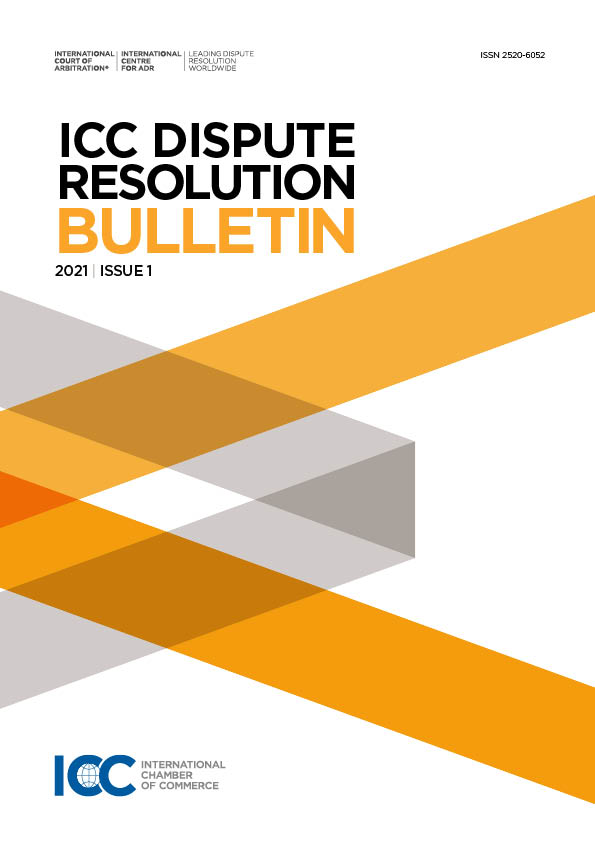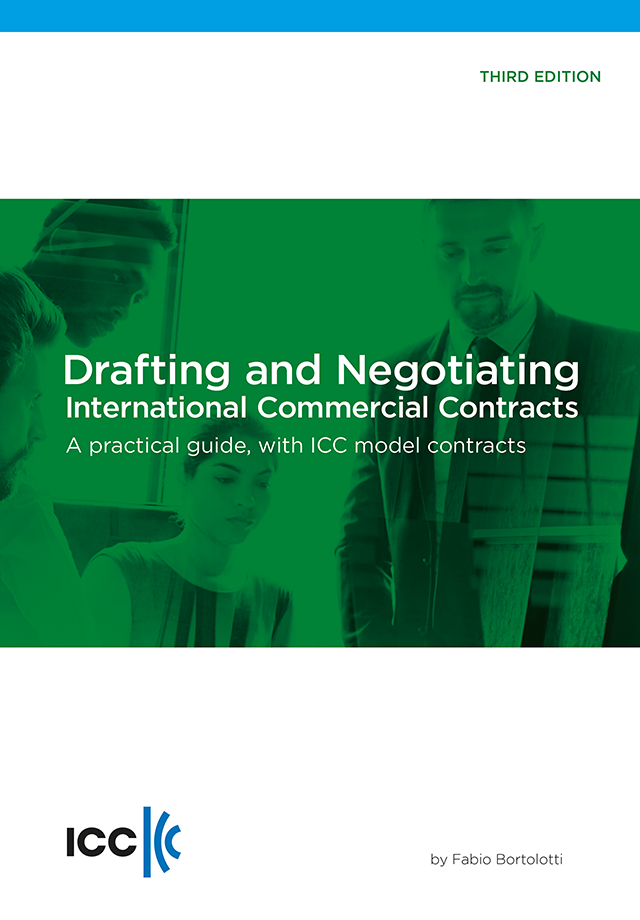Drafting and Negotiating International Commercial Contracts - 3rd edition
No. P788E
ISBN : 978-92-842-0410-6
payment Quick
delivery
€112,50
You need help, more information or a quote ?
Help CentreUpdated in 2017, this invaluable guide clarifies the issues surrounding international contracts and will help lawyers and business people avoid the most common pitfalls.
With the increasing globalization of markets, more and more businesses draft cross-borders contracts on a regular basis. However, international contracts are much more complex than domestic ones.
This practical guide clarifies the issues surrounding international contracts and will help lawyers and business people avoid the most common pitfalls. It provides examples and a comprehensive view of the principles that govern cross-border contracts, so that you can situate the various issues in their right context and take the most appropriate decisions.
Further, this volume offers insights into the basic requirements of a well-drafted contract and analyses in depth the negotiating process. It concludes with an incisive commentary on the model contracts developed by the International Chamber of Commerce (ICC), Incoterms(R) 2010 and the 2016 Unidroit Principles.
This resource is an invaluable tool for practitioners and students who wish to understand and prepare for the main issues they will face when dealing with international contracts.
| Code ISBN : | 978-92-842-0410-6 |
| Weight : | 1.3900 kgs |
| Number of pages : | 374 |
| Publishing date : | 2017 |
| Language : | English |
| Format in cm : | 18*27 |
FOREWORD
CHAPTER 1: INTRODUCTION
1.1. SCOPE OF THIS BOOK
1.1.1. The addressees: traders and non-specialized lawyers
1.1.2. Issues not covered
1.2. INTERNATIONAL AND DOMESTIC CONTRACTS: MAIN DIFFERENCES
1.3. THE BASIC ISSUES: APPLICABLE LAW AND JURISDICTION
1.3.1. Applicable law
1.3.2. Jurisdiction
1.3.3. Conclusion
1.4. THE CENTRAL ROLE OF THE CONTRACT
1.4.1. The various aspects of party autonomy (contractual freedom)
1.4.2. The parties’ contractual freedom is not unlimited
1.5. THE ROLE OF THE LAWYER DEALING WITH INTERNATIONAL CONTRACTS
1.6. MAIN ORGANIZATIONS ACTIVE IN INTERNATIONAL COMMERCIAL LAW
1.6.1. The United Nations Commission on International Trade Law (UNCITRAL)
1.6.2. The International Chamber of Commerce
1.6.3. The International Institute for the Unification of Private Law (UNIDROIT)
1.6.4. The Hague Conference on Private International Law
1.6.5. Other organizations
1.7. THE STRUCTURE OF THIS BOOK
1.8. THE PRESENTATION METHOD
CHAPTER 2: THE APPLICABLE LAW
2.1. THE NEED TO DISTINGUISH BETWEEN APPLICABLE LAW AND JURISDICTION
2.2. THE IMPORTANCE OF DETERMINING THE APPLICABLE LAW
2.3. TWO ALTERNATIVES: TRADITIONAL APPROACH V LEX MERCATORIA
2.4. THE RULES OF PRIVATE INTERNATIONAL LAW (CONFLICTS OF LAW)
2.4.1. The problems arising from the lack of uniformity
2.4.2. The Rome Convention of 1980 and the Rome I Regulation (593/2008)
2.4.3. Private international law rules and international arbitration
2.5. THE LAW APPLICABLE IN THE ABSENCE OF A CHOICE BY THE PARTIES
2.5.1. Which criteria will be used for the determination of the applicable law?
2.5.2. The criteria contained in the Rome Convention
2.5.3. The criteria contained in Rome I Regulation
2.5.4. The main problem for business: lack of predictability.
2.6. THE CHOICE OF THE GOVERNING LAW
2.6.1. The principle of freedom of choice
2.6.2. Cases where the freedom of choice is limited
2.6.3. Special problems: exclusion of mandatory rules; dépeçage
2.6.4. How to draft the choice of law clause
2.7. THE EFFECTIVENESS OF THE CHOICE OF THE GOVERNING LAW
2.7.1. “Simply” mandatory rules and “internationally” mandatory rules
2.7.2. National laws implementing European directives: the Ingmar case
2.7.3. Application of internationally mandatory rules by courts (and arbitrators)
2.8. THE DIRECT APPLICATION OF TRANSNATIONAL RULES
2.8.1. The theory of lex mercatoria
2.8.2. The UNIDROIT Principles
2.8.3. The combination of lex mercatoria and UNIDROIT Principles
2.9. THE OPTIONS FOR THE CHOICE OF THE GOVERNING LAW
2.9.1. Choice of the law of its own country
2.9.2. Choice of the law of the other party
2.9.3. Choice of the law of a third country
2.9.4. Lex mercatoria and similar solutions
2.9.5. No choice at all
CHAPTER 3: THE METHODS FOR SOLVING DISPUTES
3.1. THE IMPORTANCE OF DISPUTE RESOLUTION
3.2. THE MAIN OPTIONS
3.2.1. The choice between arbitration or ordinary jurisdiction
3.2.2. 3Mediation and ADR
3.2.3. The ICC Mediation rules
CHAPTER 4: INTERNATIONAL ARBITRATION
4.1. THE LEGAL FRAMEWORK
4.2. THE NEW YORK CONVENTION OF 1958
4.2.1. The fundamental principles of the Convention
4.2.2. The arbitrability issue
4.2.3. Problems arising in connection with public policy
4.3. DIFFERENT TYPES OF ARBITRATION
4.3.1. The distinction between ad hoc and institutional arbitration
4.3.2. Arbitration under the UNCITRAL Rules
4.3.3. Institutional arbitration
4.4. ICC ARBITRATION
4.4.1. The ICC International Court of Arbitration and the Secretariat
4.4.2. The ICC arbitration rules
4.4.3. The costs of ICC arbitration
4.5. DRAFTING THE ARBITRATION CLAUSE
4.5.1. The formal requirement of the arbitration clause: agreement in writing
4.5.2. The essential elements of an arbitration clause
4.5.3. Some typical errors frequently found in arbitration clauses
4.5.4. The optional elements of the arbitration clause.
CHAPTER 5: LITIGATION BEFORE ORDINARY (NATIONAL) COURTS
5.1. INTERNATIONAL CONTRACTS AND NATIONAL JURISDICTIONS
5.2. THE DOMESTIC RULES ON JURISDICTION
5.3. THE RULES APPLICABLE IN THE EUROPEAN AREA
5.3.1. The rules on international jurisdiction
5.3.2. Choice of jurisdiction clauses
5.3.3. The rules regarding lis pendens
5.4. THE HAGUE CONVENTION OF 2005 ON CHOICE OF COURT AGREEMENTS
5.4.1. Scope of application
5.4.2. Exclusive choice of court agreements
5.4.3. Recognition and enforcement
5.4.4. Conclusions
5.5. STRATEGIES FOR THE APPROPRIATE CHOICE OF JURISDICTION
5.5.1. Choice of forum in favour of its own courts
5.5.2. Exclusive and non-exclusive jurisdiction clauses
5.5.3. Drafting choice of forum clauses
5.5.4. Formal requirements of jurisdiction clauses
5.5.5. Effectiveness of the choice of forum clauses
CHAPTER 6: DRAFTING, NEGOTIATING AND CONCLUDING INTERNATIONAL CONTRACTS
6.1. WHY NEGOTIATE AND DRAFT A CONTRACT?
6.1.1. The trend towards self-sufficient contracts
6.1.2. Oral and written contracts
6.1.3. Letters of intent and similar documents
6.2. PREPARING FOR THE NEGOTIATION OF AN INTERNATIONAL CONTRACT
6.2.1. Identifying the legal framework where the contract is to be situated
6.2.2. Establishing a draft in view of the negotiation
6.3. THE NEGOTIATION STAGE
6.3.1. The approach to negotiation
6.3.2. The ICC Principles to facilitate commercial negotiation
6.3.3. The role of the lawyer in the course of negotiation
6.3.4. The recourse to local lawyers
6.3.5. Responsibility of the parties during negotiation
6.3.6. Agreeing upon special rules for negotiation
6.4. DRAFTING THE CONTRACT
6.4.1. The trend towards common drafting standards
6.4.2. The basic requirements of a well-drafted contract
6.4.3. Drafting techniques commonly used in international contracts
6.4.4. The language of the contract
6.5. CLAUSES FREQUENTLY USED IN INTERNATIONAL CONTRACTS
6.5.1. Force majeure
6.5.2. Hardship
6.5.3. Penalty/liquidated damages
6.5.4. Requirement of written form for modifications
6.5.5. Partial nullity
6.5.6. Non-waiver clauses
6.5.7. Clauses excluding liability for consequential damages
6.6. CONCLUDING THE CONTRACT
6.6.1. The domestic rules of formation of contracts and resulting problems
6.6.2. Rules on the formation of contracts in the CISG and UNIDROIT Principles
6.6.3. Conclusion of contracts and general conditions
6.6.4. Effectiveness of clauses contained in general conditions
6.6.5. Clauses governing the entry into force of the contract
CHAPTER 7: THE ICC MODEL FORMS
7.1. THE ICC MODEL CONTRACTS IN GENERAL
7.1.1. The various model forms published by ICC
7.1.2. General characteristics of the ICC models
7.2. AN OVERVIEW OF THE MODEL FORMS NOT INCLUDED IN THIS BOOK
7.3. CONTRACTS OF SALE
7.3.1. The UN Convention on the International Sale of Goods (CISG)
7.3.2. Incoterms® 2010
7.3.3. The ICC Model International Sale Contract
7.3.4. Model Form | ICC International Sale Contract (Manufactured Goods)
7.3.5. Model Form | International Sale Contract
7.4. AGENCY AND DISTRIBUTORSHIP AGREEMENTS
7.4.1. Organizing distribution of products abroad
7.4.2. Contracts with commercial agents
7.4.3. The ICC Model Commercial Agency Contract (long form)
7.4.4. Text of the ICC Model Commercial Agency Contract (long form)
7.4.5. The ICC Model Commercial Agency Contract (short form)
7.4.6. Text of the ICC Model Commercial Agency Contract (short form)
7.4.7. The ICC Model Distributorship Contract (long form)
7.4.8. Model Form of International Sole Distributorship Contract
7.4.9. The ICC Model Distributorship Contract (short form)
7.4.10. Text of the ICC Model Distributorship Contract (short form)
APPENDIX I: REGULATION (EC) NO 593/2008 OF THE EUROPEAN PARLIAMENT AND OF THE COUNCIL OF 17 JUNE 2008 ON THE LAW APPLICABLE TO CONTRACTUAL OBLIGATIONS (ROME I)
APPENDIX II: UNIDROIT PRINCIPLES OF INTERNATIONAL COMMERCIAL CONTRACTS 2016
APPENDIX III: INCOTERMS® 2010 WALLCHART
APPENDIX IV: ICC FORCE MAJEURE AND HARDSHIP CLAUSES
APPENDIX V: ICC ARBITRATION AND MEDIATION RULES
APPENDIX VI: DEVELOPING NEUTRAL LEGAL STANDARDS FOR INTERNATIONAL CONTRACTS
- A-NATIONAL RULES AS THE APPLICABLE LAW IN INTERNATIONAL COMMERCIAL CONTRACTS WITH PARTICULAR REFERENCE TO THE ICC MODEL CONTRACTS
APPENDIX VII: ICC PRINCIPLES TO FACILITATE COMMERCIAL NEGOTIATION
ABOUT THE AUTHOR
ICC PUBLICATIONS
ABOUT THE INTERNATIONAL CHAMBER OF COMMERCE (ICC)
Fabio Bortolotti
For more than 40 years Fabio Bortolotti has been dealing with international contracts, not only as professor of International Commercial Law at the University of Torino, but also as counsel assisting companies in negotiating and drafting international transactions and in dealing with possible disputes before courts and arbitral tribunals.
He is founding partner of the law firm Buffa, Bortolotti & Mathis, Torino. He has acted and is at present engaged as arbitrator or counsel in several international and domestic arbitrations. He is an accredited mediator, Center for Dispute Resolution (CEDR).
Fabio Bortolotti is co-chair of the Commission on Commercial Law and Practice (CLP) of the International Chamber of Commerce and has chaired various task forces which have drafted the major ICC model contracts (e.g. commercial agency, distributorship, sale, occasional intermediaries, turnkey, M&A, trademark license).
He is member of the council of the ICC Institute of World Business Law, of the ICC Commission on International Arbitration, of the ICC Commission on Competition and vice-chair of ICC Italy. He is member of various associations: “Associazione Italiana per l’Arbitrato (AIA), “Deutsche Institution für Schiedsgerichtsbarkeit E.V.” (DIS); “Union Internationale des Avocat” (U.I.A.); “Association Suisse de l’Arbitrage” (A.S.A.). He is founder and chairman of the International Distribution Institute. He is the author of numerous books and articles in the field of the international commercial contracts, contract law, distribution

